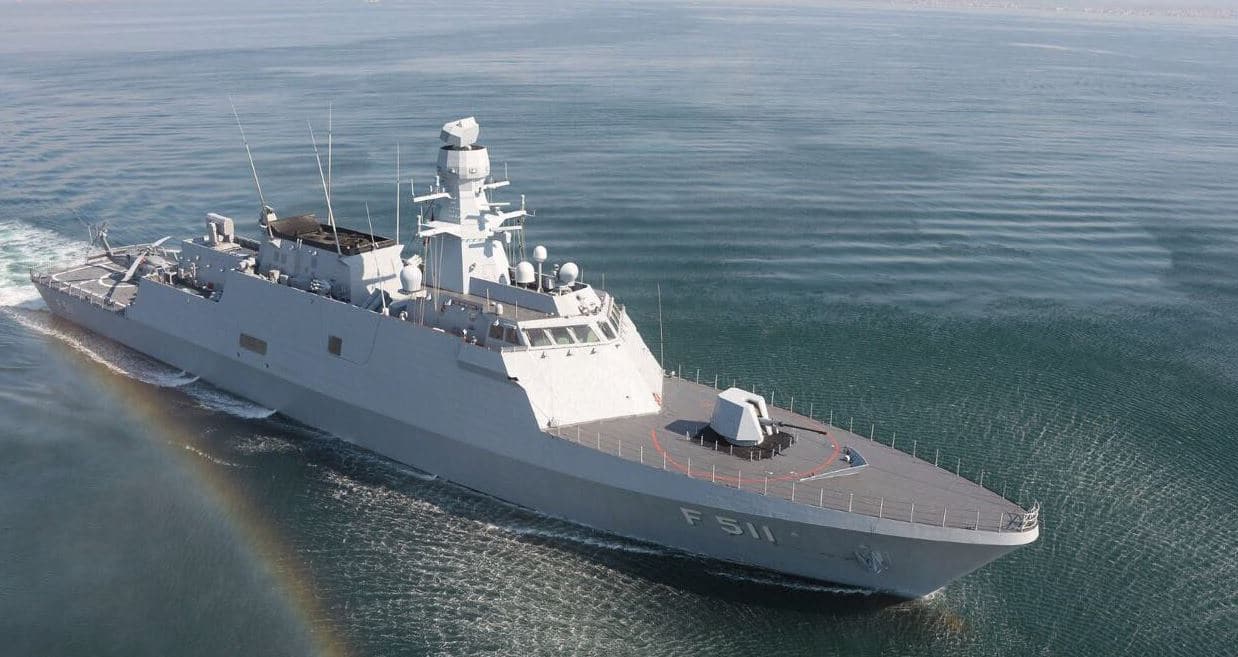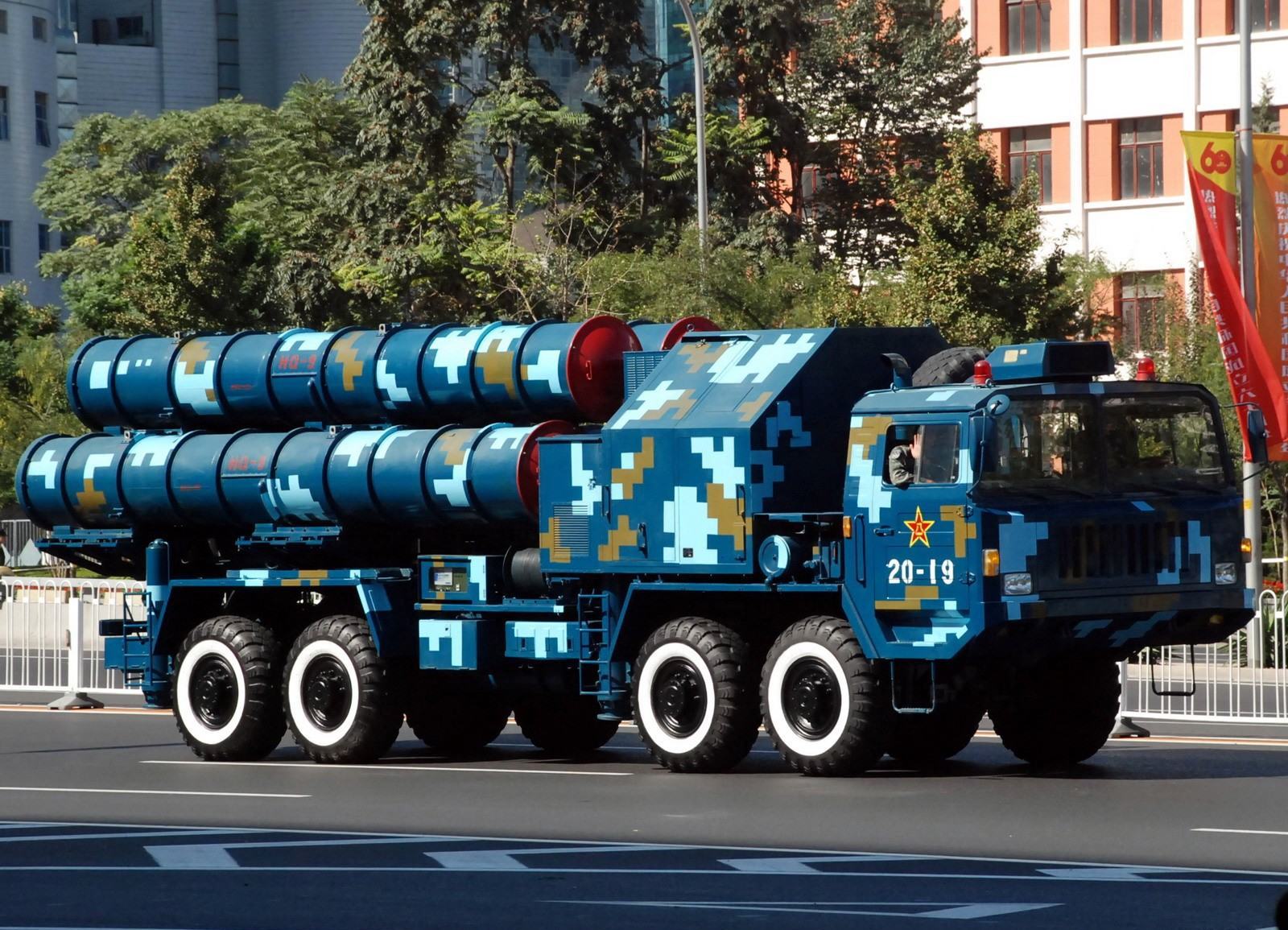2271Views 0Comments

Pakistan Inks Contract for 4 MILGEM Ada Corvettes from Turkey
On 05 July 2018, Pakistan’s Ministry of Defence Production (MoDP) has formally inked a much-anticipated contract with Turkey’s Military Factory and Shipyard Corporation (ASFAT A.Ş.) for the procurement of four MILGEM Ada corvettes for the Pakistan Navy (PN).[1]
According to Pakistan’s Press Information Department (PID), two of the corvettes will be built at Istanbul Naval Shipyard, while the remaining two will be constructed at Karachi Shipyard & Engineering Works (KSEW).[2] It adds that under the contract, Pakistan will receive “complete transfer of technology and the transfer of intellectual property rights for the design of these ships.”[3]
It had added that the fourth and final ship will be “designed jointly” by Pakistan’s Maritime Technologies Complex (MTC) and (ostensibly) the original ship designer, Savunma Teknolojileri Mühendislik ve Tic. A.Ş. (STM) as “the first indigenously designed and constructed frigate” in Pakistan.[4]
The PN earnestly began talks with STM for the Ada corvette in 2016. During an official visit to Pakistan by Turkey’s then Minister of Defence in June 2016, Fikri Işık, Pakistan requested a loan to back the purchase.[5] Since then, Turkey and Pakistan undertook commercial and technical negotiations over the potential deal, which culminated in May 2017 with Pakistan signing a Letter-of-Intent (LOI) for the ships.
In November 2017, Pakistan’s MoDP outlined that negotiations were “completed” and that “construction of the ship will start in the near future,” with Pakistan (at that time) reviewing its financing options.[6]
According to Turkey’s Ministry of Defence (MoD), the first PN corvette will be built in 54 months from the current date, with the remaining three due within 60, 66 and 72 months, respectively.[7] Neither Pakistan’s MoDP or Turkey’s MoD disclosed the price of the deal nor the exact configuration of the PN’s ships.
However in 2017, STM’s General Manager Davut Yilmaz told Anadolu Agency that the Pakistani contract was approximately worth $1 billion US.[8] According to Yilmaz, the Turkish Navy’s standard configuration is worth $300 m US per ship, but due to changes in the PN’s configuration (e.g. by sourcing “certain systems in Pakistan”), the ships would come at a lower unit-cost – i.e. $250 m US – instead.[9]
Though the final configuration is not yet known, STM had consistently maintained that the PN would have its own configuration, hinting that the PN’s corvettes would be configured differently from those of the Turkish Navy.[10] In fact, in its statement announcing the deal, the PID outlined that the PN’s MILGEM will be equipped with an “indigenously developed missile system.”[11] This could be a hint of the PN potentially integrating the Harba dual-land-attack cruise missile (LACM) and anti-ship cruising missile (ASCM).
Analysis: The Pakistan Navy’s Surface Fleet Plans (Quwa Premium)
An analysis of how the Pakistan Navy could organize its surface fleet in the future, especially in terms of its forthcoming procurement: 4 Type 054A, 4 MILGEM Ada, 4 (existing) F-22P, etc. |Read More.
The lead-class in Turkey’s Milli Gemi (National Ship) program, the Ada was primarily designed for anti-submarine warfare (ASW) operations. It has a displacement of 2,300 tons and overall length of 99.50 m. It has a maximum speed of over 29 knots, though at 15 knots it can sustain a range of 3,500 nautical miles.
In terms of armaments, the Ada can be configured with a 76-mm main gun, two quad-cell ASCM launchers, two triple lightweight ASW torpedo launchers, two remove weapon stations (RWS) and a pedestal-based (in the aft area) point-defence missile system (PDMS) such as the RIM-116 Rolling Airframe Missile (RAM).
In terms of electronics, the Ada is equipped with an air and surface surveillance radar (i.e. a Thales SMART-S Mk2-class), electronic support measures (ESM) system, electro-optical and infrared (EO/IR) pod and hull-mounted sonar, among others. The Ada is also equipped with an aft hanger and flight deck capable of sustaining one 10-ton naval utility helicopter, which can also be capable of ASW operations.
With the contract signed, several new issues are now in play with regards to the PN’s modernization plans as well as long-term opportunities for domestic and foreign defence industry players.
Understanding the Pakistani MILGEM Contract
The available details of the Pakistani contract indicate the following: First, the PN’s procurement run is to be completed by 2023-2024, i.e. shortly following its slated induction of four Type 054A multi-role frigates from China. Second, the 4.5-year gap between the contracting signing-date and the first ship could be a buffer for Pakistan to submit its contractual payments ahead the ships entering construction (which, given the rapid sequential induction-rate will begin in the same general timeframe).
Is Pakistan Getting Transfer-of-Technology?
The PID claimed that Pakistan will receive “complete transfer of technology and the transfer of intellectual property rights for the design of these ships” from Turkey.[12] It is a broad statement, but one must look at what Turkey can technically offer to determine the potential scope of the transfer-of-technology (ToT).
Firstly, Pakistan has generally used the term ‘ToT’ loosely. However, KSEW generally undertakes its work – even with ‘ToT’ – using kits-of-material (KoM) and technical documentation it is provided by the original equipment manufacturer (OEM). For example, the MoDP’s annual report for 2015-2016 clearly states that the forthcoming Hangor (II) submarines will be built using KoM and technical documentation from China.[13]
Ultimately, the reality of shipbuilding is that construction at one’s shipyard is among the final few stages of shipbuilding (along with assembly, integration and testing). Shipbuilding at KSEW basically follows the fabrication process of the necessary propulsion, electronics, steel and composites material by a country’s in-land industry suppliers. Even if KSEW could manufacture a ship end-to-end, it must still import each of the critical inputs from other countries, such as China, Germany, the U.K., France and/or the U.S.
Thus, it is not surprising that imports are still necessary to sustain Agosta 90B, F-22P, Azmat and/or Hangor (II) production at KSEW. Should it become difficult to secure critical imports from a certain supplier/OEM (e.g. France’s Naval Group/DCNS), then it is no longer possible to manufacture its design (e.g. Agosta 90B). Unless Pakistan develops the capacity to manufacture the core inputs (e.g. steel, propulsion, etc), it will not have turnkey shipbuilding capabilities analogous to its suppliers.
However, the MILGEM is a unique program as far as Pakistan is concerned. Granted, it too will require the PN and KSEW to import core inputs from abroad, but in this case, the design OEM (i.e. STM) is not linked to its input suppliers. For example, Turkey does not own or have a stake in General Electric and its LM2500 gas turbine system (which powers the Ada); if it can pay, Pakistan can opt for an alternative.
Thus, unlike Naval Group or ThyssenKrupp Marine Systems (TKMS), which could mandate its ToT recipient to import specific inputs from subsidiaries, partners or sub-contractors, STM need not require KSEW to specific goods (notwithstanding non-recurring engineering costs). In other words, the only technology the Turks can conceivably give to Pakistan (in terms of the MILGEM) is expertise regarding the ship’s design, such as the knowledge, capacity and tools to integrate one’s own subsystems, weapons and, potentially (especially if “complete” ToT is on the cards) core inputs of one’s own choice, such as steel, superstructure and/or engines.
Granted, Pakistan will not gain turnkey shipbuilding capabilities, but through the MILGEM it could gain an original design upon which it can (with STM’s ToT) upgrade and modify through the long-term. This returns to the topic of building strong integration expertise, which Quwa had touched upon in its analysis on the Pakistan Space Centre (PSC) and its satellite manufacturing hopes. Yes, Pakistan will not manufacture the core inputs, but by building strong integration expertise, it can select its own pool of input suppliers (i.e. based on cost-effectiveness and/or meeting unique requirements) to build original end-solutions.
Pakistan Plans to Have PRSS-01 Satellite in Orbit in July (Quwa Premium)
Pakistan’s claims about PakTES-1A (Pakistan Technology Evaluation Satellite) being indigenous might be a stretched-claim, but through the PakTES-1A, the country is building expertise in pairing different third-party systems – such as electro-optical equipment – into original solutions |Read More.
If Pakistan is receiving “the keys” to the MILGEM Ada’s design from STM, it could be a progressive step. The PN would not be tied to any one country to undertake the production of future MILGEM ships (be it the Ada or a future variant), it can source core inputs from the suppliers of its own choice and, in turn, have some control on cost and configuration.
On first reading, the PID’s statement about the fourth PN MILGEM being a “frigate” could indicate such a step (i.e. an evolved design through MTC’s own configuration and integration work). However, one must remember that the PN refers to Type 21 frigates as “destroyers”. Thus, the standard terminology of the MILGEM Ada in the PN could be “frigate” instead of “corvette”. However, if STM is indeed providing MTC and KSEW the capacity to continue working on the MILGEM design, such as develop lengthened variants with vertical launch systems (VLS), then there is at least long-term potential for a mainstream frigate.
Industry Opportunities?
With the MILGEM Ada contract inked, the Pakistan Navy has 10 ships – i.e. four Type 054A, four Ada and two OPV 1900 – on order that can be equipped with a wide range of onboard electronics, munitions and aircraft. In theory, this should amount to opportunities for the defence industry, especially if the PN would opt for some measure of standardization across its surface fleet.
For the industry, potential opportunities include the following (among others):
- Naval Utility Helicopters/Anti-Submarine (ASW) Helicopters
- Phased-Array Air/Surface Surveillance & Targeting Radars
- Electronic Support Measures (ESM)/Electronic Intelligence (ELINT) Systems
- Combat Management Systems (CMS)
- Low-Probability-of-Intercept Pulse-Doppler Radars
- Towed Array Sonars
- Electro-Optical/Infrared (EO/IR) Turrets
- 76-mm Main Guns
- Anti-Ship Cruising Missiles
- Lightweight ASW Torpedoes
- Pedestal-Based Short-Range Air Defence/Surface-to-Air Missile (SAM) Systems
- Rigid Hull Inflatable Boats
Certainly, absolute standardization in every domain will not be possible, especially if the PN seeks marque Chinese subsystems, such as the LY-80 surface-to-air missile (SAM) system. It would follow that the LY-80 will command its own sensor and CMS suite. However, segmentation in configuration could open the door to multiple OEMs to offer their respective packages to the PN.
Currently, the PN’s suppliers comprise of Aselsan, Havelsan, Hensoldt, Leonardo and Thales. Broadly, the vendors Saab and MBDA Italy could also be in play considering that they supply goods to the Pakistan Air Force and the Pakistan Army. Granted, it is possible that in-exchange for credit to back these deals, the PN may need to procure from companies in Turkey (MILGEM), China (054A) and the Netherlands (Damen).
Nonetheless, this is an expansive modernization effort and, inarguably, the largest in the PN’s history. This is a significant shift considering the service arm’s history of procuring mostly second-hand – and generally obsolete – equipment.
Why the MILGEM Ada? (Quwa Premium Report)
An analysis of why the Pakistan Navy settled with the Ada-variant of the MILGEM, i.e. without an area-wide anti-air warfare (AAW) capability |Read More.
[1] Press Release. “Pakistan Navy Signed Contract for Acquisition of 4x MILGEM class warships with Turkey.” Press Information Department. Ministry of Information. Government of Pakistan. 05 July 2018. URL: http://pid.gov.pk/site/press_detail/8782 (Last Accessed: 06 July 2018).
[2] Ibid.
[3] Ibid.
[4] Ibid.
[5] “National Defence Minister is in Pakistan”. Millyet. 03 June 2016. URL: http://www.milliyet.com.tr/milli-savunma-bakani-isik-pakistan-da-kocaeli-yerelhaber-1406967/ (Last Accessed: 15 March 2018).
[6] Sena Guler. “Pakistan looks for helicopters, naval ships from Turkey”. Anadolu Agency. 25 November 2017. URL: https://aa.com.tr/en/asia-pacific/pakistan-looks-for-helicopters-naval-ships-from-turkey/979403 (Last Accessed: 15 March 2018).
[7] “Turkey to sell 4 corvettes to Pakistan Navy in largest single military export deal.” Anadolu Agency (via The Daily Sabah). 05 July 2018. URL: https://www.dailysabah.com/defense/2018/07/05/turkey-to-sell-4-corvettes-to-pakistan-navy-in-largest-single-military-export-deal (Last Accessed: 06 July 2018).
[8] Göksel Yıldırım. “MILGEM’s $1 billion export journey”. Anadolu Agency. 11 May 2017. URL: https://aa.com.tr/tr/ekonomi/milgemin-1-milyar-dolarlik-ihracat-yolculugu/815910 (Last Accessed: 15 March 2018).
[9] Ibid.
[10] Press Release. “STM’s Proud is Launched in Pakistan.” Savunma Teknoloji Mühendislik ve Ticaret A.Ş. (STM). August 2016. URL: https://www.stm.com.tr/en/news/announcement/stms-proud-is-launched-in-pakistan (Last Accessed: 06 July 2018).
[11] Press Information Department. 05 July 2018.
[12] Ibid.
[13] Ministry of Defence Production (MoDP) Yearbook 2015-2016 Part II. Government of Pakistan. p83


